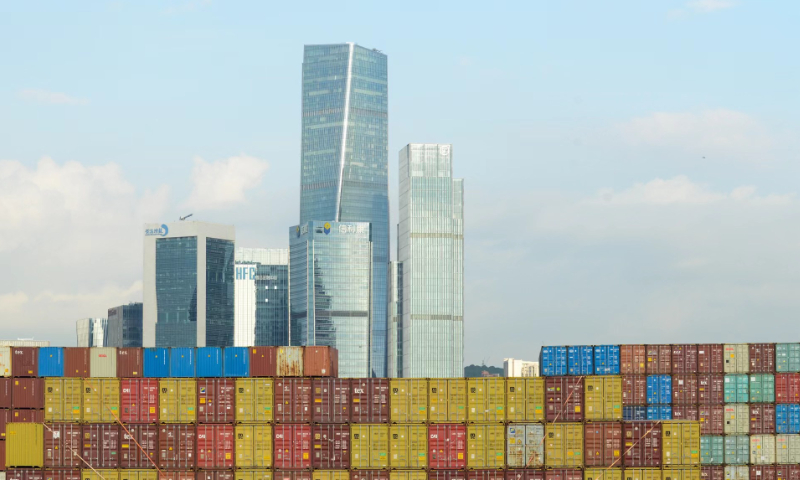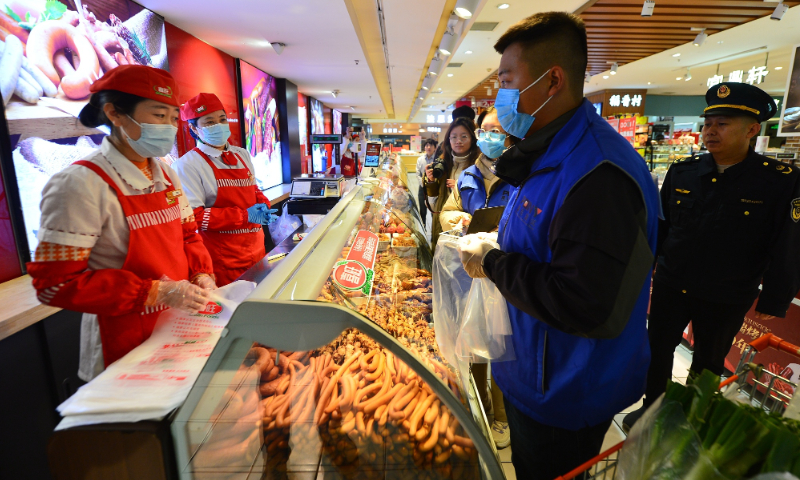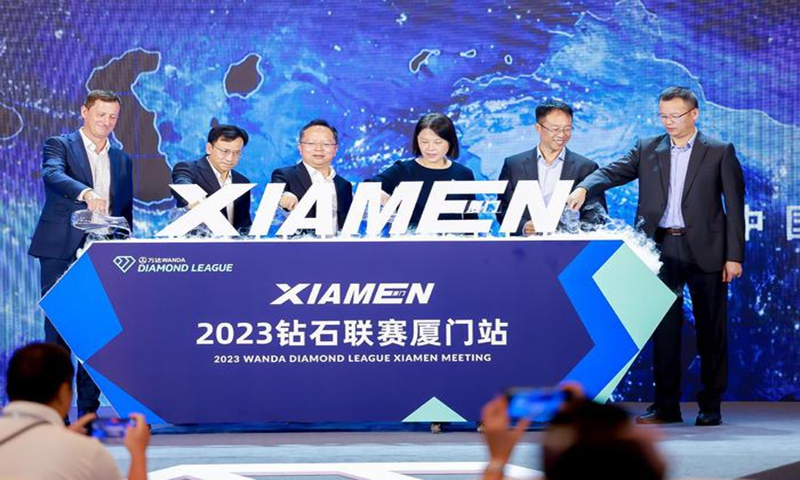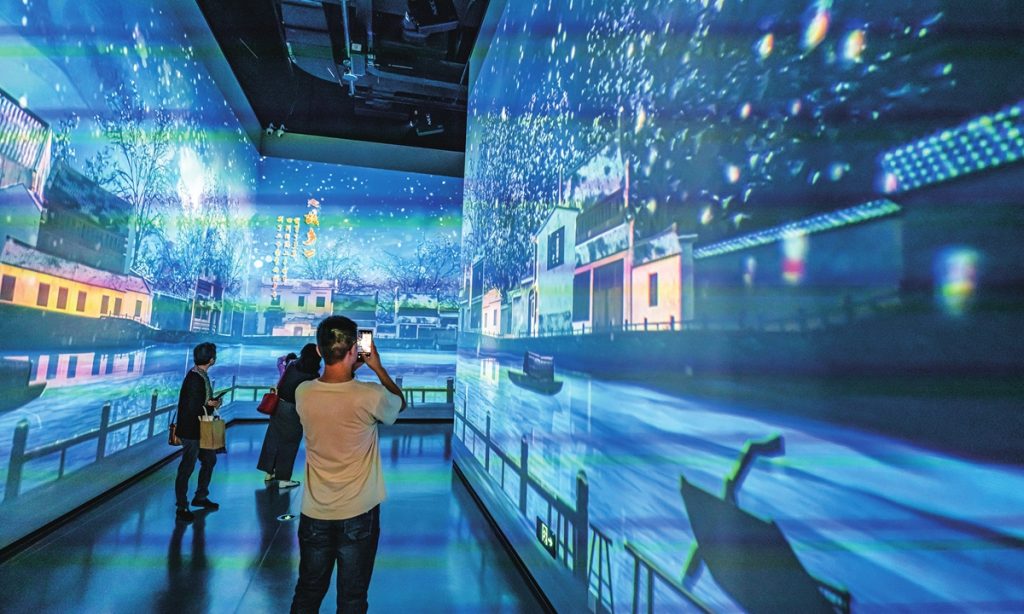Shenzhen city leads in industrial upgrade in China, constantly gaining pace in innovation

Walking through the bustling Huaqiangbei commercial area in Shenzhen city, South China's Guangdong Province, the largest electronics retail market in China, one is immediately impressed by its international atmosphere. Foreign faces busily pass by, and English logos adorn almost every big tower, showcasing various products from LED to mobile phones, all made in China for the world.
The scenes at Huaqiangbei are a symbol of the city's vibrant trade. Despite global headwinds, Shenzhen, an epitome of China's manufacturing and commerce, remains resilient.
Fueled by an industrial upgrade on the back of government support, Shenzhen has experienced a sustained economy-wide transformation. Notably, the city's exports have shifted from labor-intensive sectors to high-value products including electronic devices and electric vehicles (EVs).
The shift has boosted Shenzhen's economy, which remains on an upward trajectory, driven by the high-end products generated in the city, industry experts said.
Global competitiveness
Mohamed, a Yemeni businessperson who frequently visits the city to meet local business partners and place orders, kicked off a "pilgrimage" at the Huaqiangbei commercial area to restock his electronics store in Yemen.
In an interview with the Global Times, he said that he has been coming here for many years, rating the products for their cost-effectiveness and high quality.
Despite global inflation and the extension of the supply chain to neighboring Asian countries in the past several years, Mohamed is impressed with the competitiveness of Chinese products. He said that there is nowhere else to find better products than Shenzhen. Mohamed's sentiments are not isolated. Numerous high-tech enterprises, which originated and flourished in Shenzhen, are collectively bolstering the city's industrial prowess, building up the city's competitiveness.
At a local production line of the domestic mobile phone maker Honor, the production of a mobile phone takes only 28.5 seconds, with 75 percent of the work being done by automated tools, the Global Times learned from the company.
Honor's exports experienced significant growth, achieving a 200 percent increase in its overseas markets in 2023.
Attaching great importance to product innovation, the company has invested 10 percent of its revenue in research and development (R&D) every year since it was spun off in November 2020. Its R&D investment intensity now ranks among the top six in the country, Song Yiwen, president of Honor's supply chain management department, told the Global Times.
BYD, the EV manufacturing giant based in Shenzhen, also achieved notable results outside of China in 2023.
The car-maker secured the title of the top-selling new-energy vehicle in Brazil for several months in 2023 and became cumulative sales champions in Thailand, Singapore and Colombia from January to October 2023, BYD told the Global Times.
While consistently exporting high-quality products to overseas markets, BYD has built core technological advantages in new energy areas such as batteries, motors, and electronic controls.
In the warehouse of MBE International, a Shenzhen-based logistics company, workers are using forklifts to neatly arrange goods from all over the country. Most of these goods are high-value-added electromechanical products that will be shipped to overseas markets.
Tang Lingli, general manager of the logistics company, with over 20 years of experience in the industry, has been a witness of how industry transformation has brought about changes to foreign trade.
About 20 years ago, Shenzhen's logistics facilities were not well-developed, and the volume of goods handled was so restricted that handling 1,000 tons of goods in a month was considered to be a great feat, Tang recalled.
Nowadays, MBE International's monthly shipping volume reaching 16,000 tons is the norm, and the value of transported goods has significantly increased, she said.
"From shoes, clothing, and bags to electronic products, we have witnessed high-quality development and transformation and upgrading of Shenzhen's foreign trade," Tang said.
Advanced technology
The Shenzhen Bureau of Commerce told the Global Times that the city is robustly supporting emerging sectors such as advanced technology and high-end manufacturing.
"Shenzhen is actively accelerating its global product outreach, encouraging traditional industries to increase investments in technology," the bureau said.
The goal is to improve the quality and tech features of exported goods, boost the competitiveness of exported goods like electronic products, and increase overall export volume to strengthen Shenzhen's position in exports, according to the local commerce bureau.
Latest data the Global Times obtained from Shenzhen Customs shows that Shenzhen's import and export volume from January to November amounted to 3.51 trillion yuan ($489 billion), showing a year-on-year growth of 6.3 percent. This growth rate places Shenzhen at the forefront among the top 10 major foreign trade hubs in the country.
Specifically, the city's exports have surged by 13.6 percent during the period. It is anticipated that Shenzhen is positioned to secure its 31st consecutive first-place finish in terms of annual exports in the Chinese mainland.
The electronic information industry has remained Shenzhen's pillar industry. Exports of electromechanical products, mainly computer communications and other electronic equipment, account for over 70 percent of the total exports, according to media reports.
Looking forward, foreign trade in 2024 is expected to be better than last year because the year 2023 experienced the lingering impact of the COVID-19 pandemic in the first quarter, Li Chang'an, a professor at the Academy of China Open Economy Studies of the University of International Business and Economics, told Global Times on Wednesday.
The upgrading and transformation of industries have been pivotal in boosting exports, and this year they will play an even more critical role in driving the nation's foreign trade growth, Li said.







